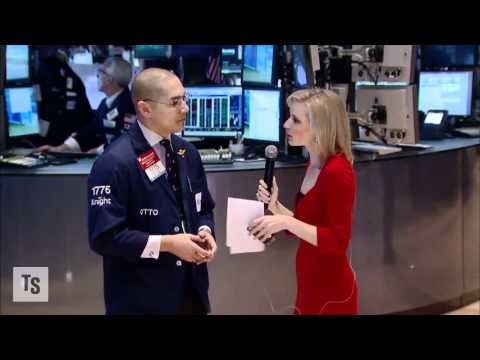China’s ETF Options Are Latest StockMarket Milestone Timeline Bloomberg Business
Post on: 4 Апрель, 2015 No Comment

(Bloomberg) — The Shanghai Stock Exchange starts trading options on the China 50 ETF on Monday, the first new equity derivatives allowed by Chinese regulators since CSI 300 Index futures were introduced in 2010. Since then, the nation’s equity market has expanded to become the second largest worldwide.
Here’s a timeline of key milestones for China’s stock market:
Nov. 26, 1990: The start of the Shanghai Stock Exchange. The bourse now has more than 1,000 listed companies with a combined market value of 23.9 trillion yuan ($3.8 trillion). Average daily turnover reached 151.8 billion yuan last year, according to data compiled by Bloomberg.
Dec. 1, 1990: The Shenzhen Stock Exchange was established. It has 1,628 companies with a total market capitalization of 14.2 trillion yuan. Average daily turnover reached 55.7 billion yuan in 2014.
July 15, 1993: Tsingtao Brewery Co. sold shares in Hong Kong, becoming the first Chinese company to list so-called H shares. More than 200 H shares now trade on the Hong Kong stock exchange, with a combined market capitalization of HK$5.6 trillion ($896.9 billion).
Nov. 8, 2002: The China Securities Regulatory Commission and the People’s Bank of China released joint rules on the qualified foreign institutional investor, or QFII, program, allowing overseas investors to buy yuan-denominated A shares for the first time. At the end of January, the regulator of foreign currency had approved 262 foreign investors with combined quotas of $68 billion.
July 9, 2003: UBS Group AG became the first QFII to buy A shares, purchasing stakes in four companies, including Baoshan Iron & Steel Co. and Shanghai International Port (Group) Co.
Oct. 30, 2009: The first batch of 28 companies started trading in Shenzhen’s ChiNext board, which was created to facilitate fundraising by smaller companies in fledgling industries. The number of the companies trading on the board has grown to 413.
March 31, 2010: The Shanghai and Shenzhen exchanges started trials of margin trading and short selling. The balance of margin debt on the Shanghai Stock Exchange has more than tripled over the past two years. It rose to a record 777.9 billion yuan on Feb. 5. The balance of short selling in Shanghai has increased 29 percent in the past two years.
April 16, 2010: China started trading index futures linked to the CSI 300 Index. Volumes have jumped about 10-fold over the past four years.

Aug. 11, 2011: Then-Vice Premier Li Keqiang said China would allow offshore yuan in Hong Kong to be invested in the nation’s stocks and bonds under a system known as RQFII. At the end of January, regulators had approved 304.5 billion yuan of RQFII quotas for 99 foreign institutional investors.
Sept. 6, 2013: China resumed trading of government-bond futures after an 18-year suspension amid a probe into alleged market manipulation. Volumes have more than doubled over the past year.
Nov. 17, 2014: The Shanghai-Hong Kong stock trading link made its debut, giving foreign investors unprecedented access to mainland shares. The aggregate quota for purchases of domestic stocks is set at 300 billion yuan. Foreign investors have bought almost 98 billion yuan of mainland stocks as of Feb. 6.
To contact Bloomberg News staff for this story: Zhang Shidong in Shanghai at szhang5@bloomberg.net
To contact the editors responsible for this story: Michael Patterson at mpatterson10@bloomberg.net Allen Wan














